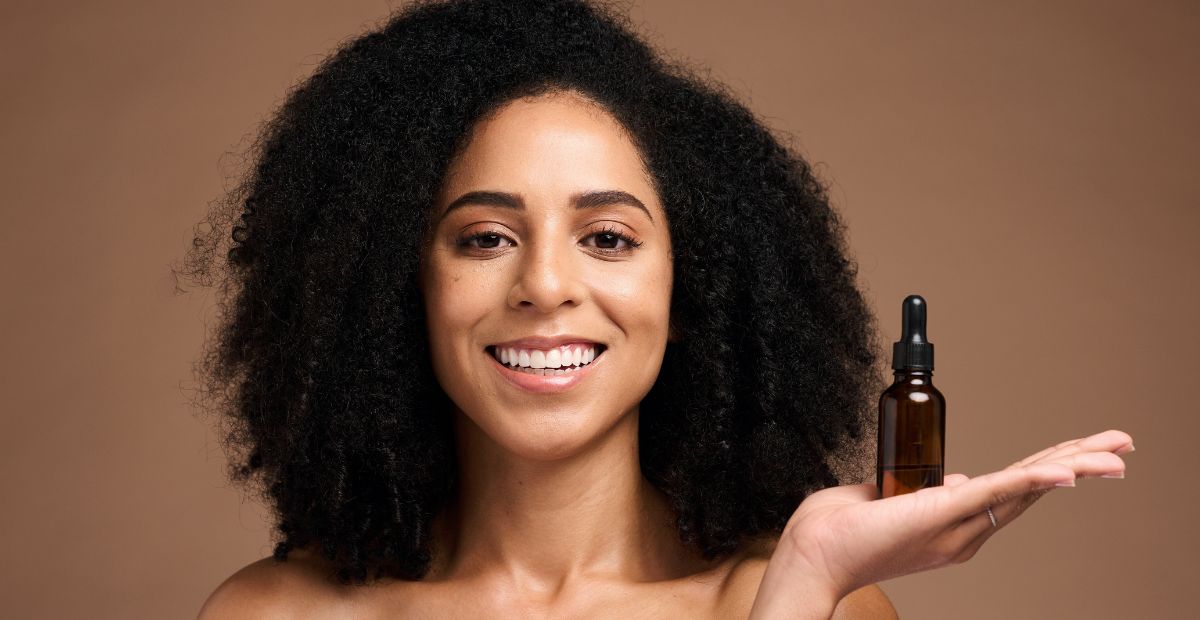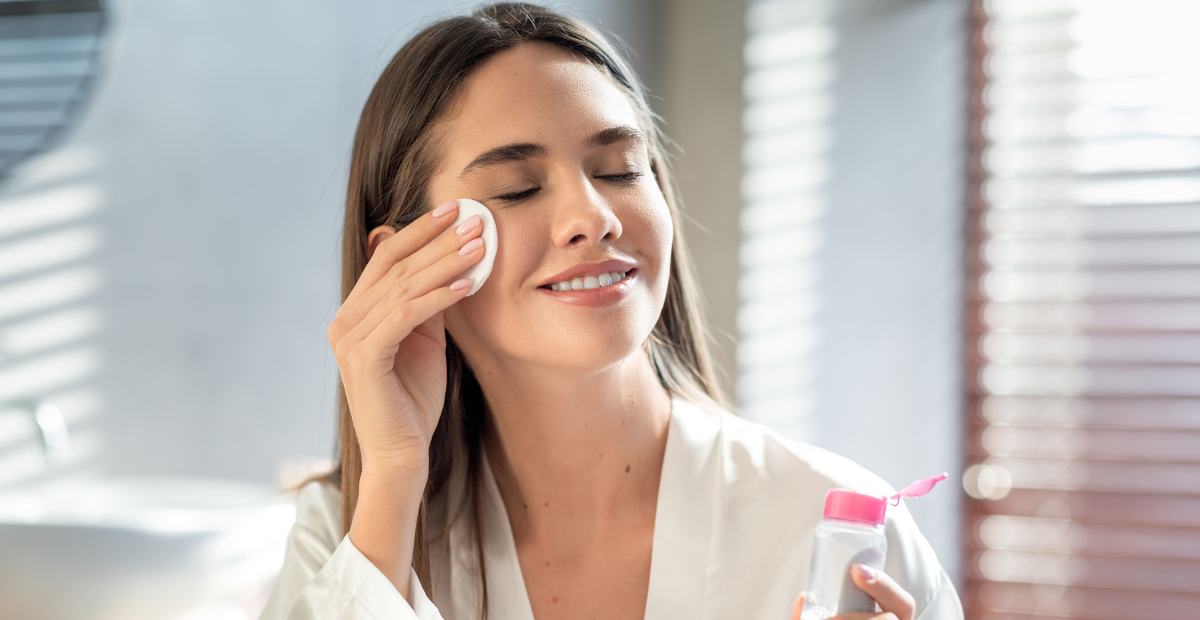Tranexamic Acid for Skin: Anti-Hyperpigmentation Tool You’ve Never Heard Of
Onskin Content Team
Your guides through the skincare chaos
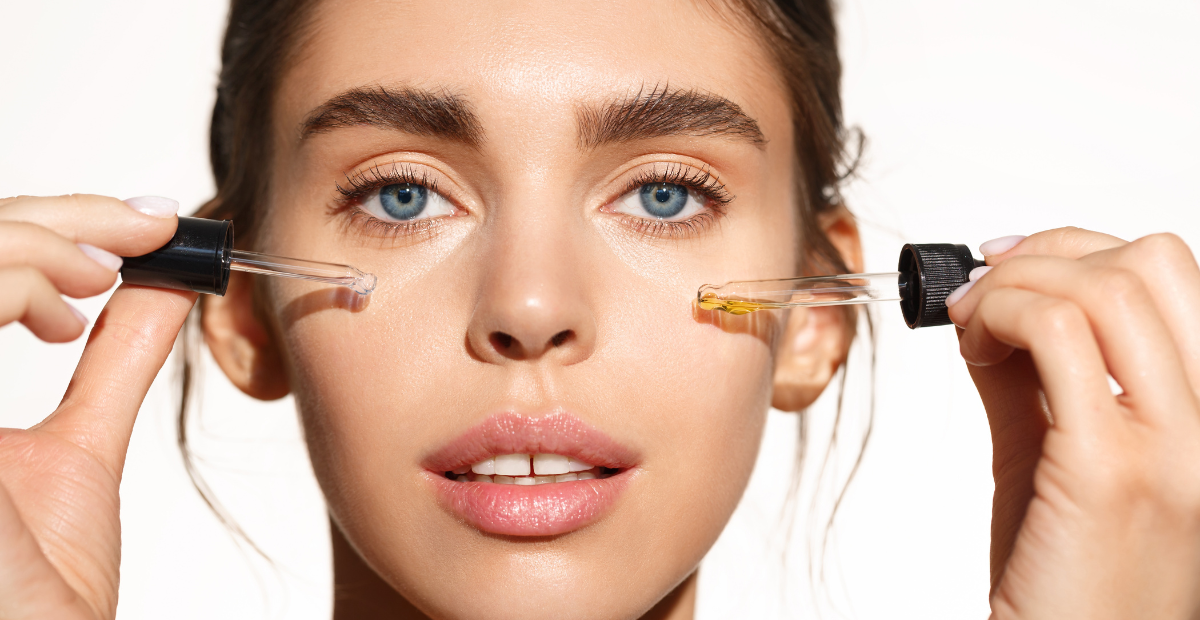
Though tranexamic acid may not be the most popular skincare ingredient, its benefits are astonishing. It tackles everything from melasma to acne with almost no side effects, making it a potential new favorite in your skincare routine. So, we’re here to give this underrated ingredient the attention it deserves.
What Is Tranexamic Acid?
What if we told you there’s a skincare ingredient that effectively fights hyperpigmentation, causes practically no side effects, and is suitable for all skin types? Sounds like a bare-face advertisement, right? In fact, it’s not. Moreover, brightening the skin isn’t its only benefit. But first things first.
Originally, tranexamic acid was used as a medication to stop heavy bleeding. The U.S. Food and Drug Administration approved it for conditions such as menstrual bleeding and tooth extractions in patients with hemophilia.
Its skincare benefits were discovered by accident. More than 55 years ago, Dr. Nijo Sadako used tranexamic acid to treat a patient with hives. The patient also had melasma, and within a couple of weeks, melasma symptoms significantly improved. That unexpected effect paved the way for the ingredient’s oral use against hyperpigmentation.
With time, manufacturers started to add tranexamic acid to skincare products for topical use. And this has a scientific background as well.
Benefits of Tranexamic Acid for Skin
The first one is obvious:
Tranexamic acid can fight melasma,
a skin condition when some areas of skin are darker than a person’s normal complexion. And several studies have proved this fact.
In one of them, 50 female patients applied a 3% tranexamic acid solution to one side of their face and a 3% hydroquinone + 0.01% dexamethasone to the other. Both treatments improved epidermal melasma without any significant differences. However, there was one important thing in favor of tranexamic acid—it caused fewer side effects than the other treatment.
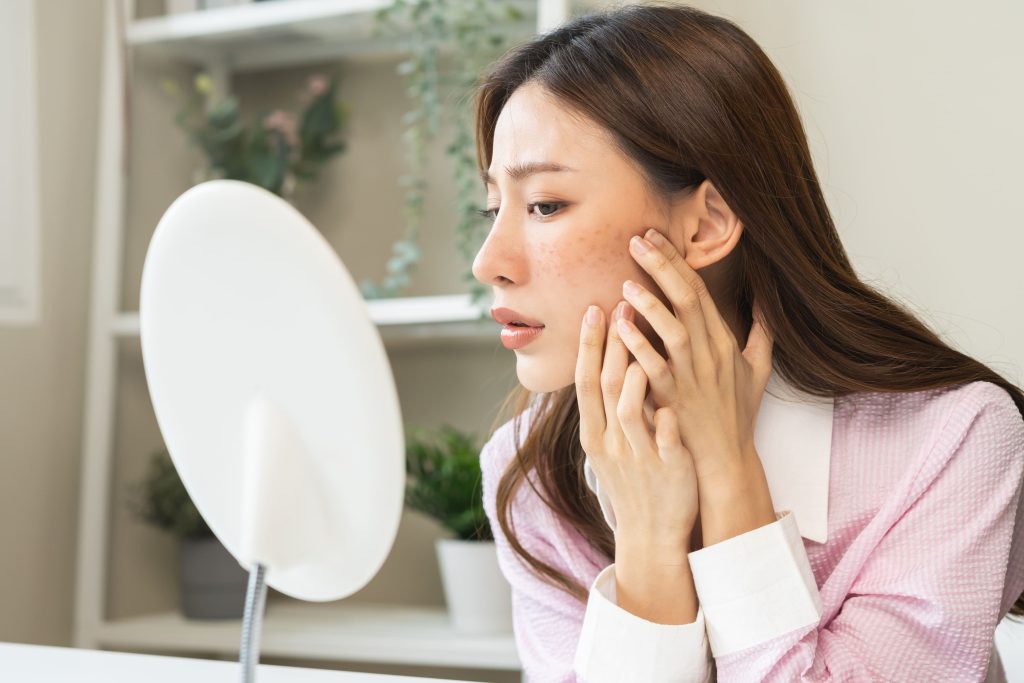
Another study also showed the effectiveness of tranexamic acid against melasma. As part of it, scientists compared a 5% TA solution with a 3% hydroquinone solution. Both treatments performed well. But yet again, the TA group was more satisfied due to fewer side effects.
It makes the skin barrier stronger (and thus helps with rosacea).
If we imagine rosacea as a bottle of scotch, it would definitely be a blended one. The thing is, there’s no single cause of rosacea. It’s influenced by a mix of genetics, skin type, and environmental triggers. Factors like sun exposure, alcohol, temperature changes, and more can all trigger or worsen symptoms. All these cause excessive blood flow to the skin, leading to flushing, inflammation, and skin sensitivity. Over time, the damage weakens the skin’s barrier, making it more prone to irritation and dryness.
In 2016, scientists discovered that improving the skin barrier can greatly reduce rosacea symptoms. It strengthens the outer layer of the skin, controls immune responses, and reduces angiogenesis (the process of forming new blood vessels).
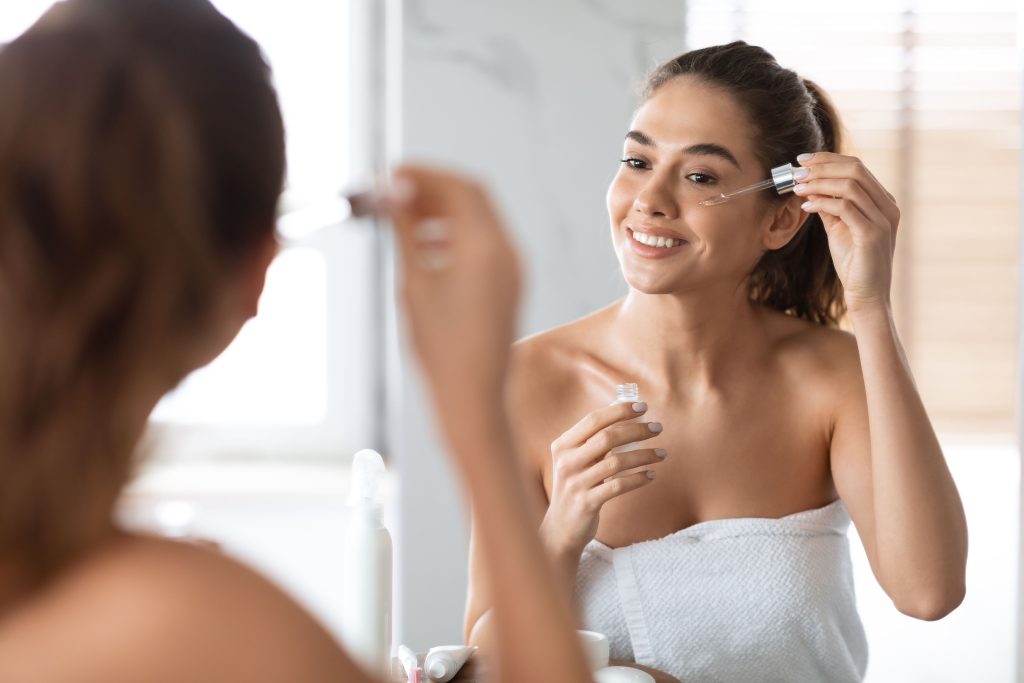
As a matter of fact, since rosacea and acne share some similar causes, tranexamic acid might help treat acne as well.
Tranexamic acid helps repair photodamaged skin.
One experiment conducted a couple of years ago showed that tranexamic acid can also be helpful in treating dark spots and reducing discoloration caused by the sun.
Scientists tested a facial serum with cetyl tranexamate mesylate in its formula, which is basically a derivative of tranexamic acid. Participants applied the serum twice a day for two months. By the end of the study, dark spots and redness had significantly improved. Most people noticed positive changes in just two weeks.
Guess what? No serious side effects were recorded. However, just because a product contains tranexamic acid doesn’t mean it’s 100% safe. There may be other ingredients in it. To see if they’re safe for your skin type and issues, you can use the OnSkin app. Just take a picture of the product or its barcode, and OnSkin will do the rest.
It’s effective against post-acne erythema.
Post-acne erythema is a red mark that can appear on the place where a pimple used to be. It usually fades away on its own after some time but can still bring discomfort to some people.
One option to deal with it is topical application of skincare products. Creams and gels which contain tranexamic acid are effective in reducing post-acne erythema lesions and bring no serious side effects.
Is Tranexamic Acid Really That Safe?
Actually, that’s true. As you can see, the experiments and studies described above showed practically no serious negative effects when the ingredient was applied topically.
So, tranexamic acid is considered safe in skincare products. However, when scientists used high concentrations of the ingredient during the experiments, a few mild side effects were observed, which could also be triggered by individual reactions. These include irritation, dryness, redness, and scaling. The last two symptoms, by the way, were easily treated with a moisturizing cream.
Anyway, the best advice is to consult your dermatologist before starting to apply the product. They will give you the most up-to-date information on how tranexamic acid may help with your specific skin issues.
How to Apply Tranexamic Acid
You can find tranexamic acid in a wide range of skincare products, including masks, moisturizers, serums, creams, and more. Active ingredients are always more effective when used in leave-in products, which makes creams and serums especially beneficial.
Depending on the type of product, it’s best to follow the instructions on the label. These should include details on the recommended amount, application frequency, and how to incorporate it into your skincare routine for the best results.
And as you already know, not all ingredients in the product’s formula are equally safe or beneficial. So, checking the product with OnSkin won’t hurt:)
FAQ
-
Where do I start with OnSkin?
Download the app and think of a product you’d like to know more about. Then, go to the main screen and choose how you’d like to get the info —by manually looking it up in the search bar, by scanning its barcode, or by simply taking a picture of the packaging. Once you’ve done any of these, you can see how safe the product is and if it suits your skin or hair (if this analysis is available).
-
What is Safety Rating, and how is it calculated?
In OnSkin, we base product rates on ingredients. Each is closely studied by our medical team and then evaluated. This way, each product gets a score from 0 to 100, with 100 as the safest level.
Safety Levels
- Excellent (76–100)
- Good (51–75)
- Not great (26–50)
- Bad (0–25)
These scores are backed by the latest scientific studies. You can find links to the resources we’ve used on each ingredient page. To assess the safety of product ingredients, we evaluate them according to the following parameters/criteria
- Endocrine disruption risk / Reproductive toxicity
Indicates the probability of mimicking, blocking, or interfering with the body hormones.
- Сarcinogenicity
Measures the potential risk of inducing cancer.
- Allergy risk
Estimates the probability of an allergic reaction.
- High concentration alert
Determines the risk of being unsafe in certain amounts.
-
What is Skin Match?
Based on the info you input about your skin type, age, skin care goal, and other “settings,” OnSkin checks how well a product is tailored to your unique skin needs — it’s basically like a dermatologist helping you find the right products, minus the fees and the long wait. The product you’re checking might be labeled as It’s a match!, Hit-or-miss, or Not a match for you. The app also detects ingredient groups such as Anti-acne, Anti-inflammatory, Moisturizes, May be drying, Comedogenic, and others — by tapping one, you see exactly what ingredients from this or that group are in the product.
-
I seem to have a problem with using the app. Who should I contact?
Please reach out to us at [email protected], and we’ll carefully look into your issue. Your ideas for improving the app are also very welcome!
-
Do you have an Android version?
Not yet! Hey Android users, we hear you, and we're thinking about making an Android version, but we haven't started the development yet.
Tracker Sent!
It’s on the way to your inbox.


